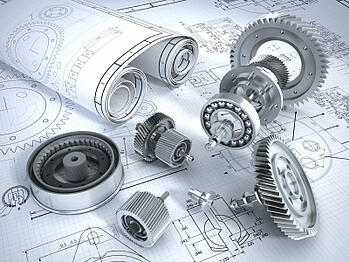 Reverse engineering allows you to obtain the exact dimensions of an object so you can replicate it. Specialized laboratories have various types of equipment to measure almost any type of object, no matter how large or small, or detailed or precise. The measurements are then delivered in a format that will allow you to produce a copy. You might need to reverse engineer a custom part, an object that does not have original design plans, or a unique antique.
Reverse engineering allows you to obtain the exact dimensions of an object so you can replicate it. Specialized laboratories have various types of equipment to measure almost any type of object, no matter how large or small, or detailed or precise. The measurements are then delivered in a format that will allow you to produce a copy. You might need to reverse engineer a custom part, an object that does not have original design plans, or a unique antique.
Reverse engineering services can be extremely specialized, and not every provider can meet every need for every customer. Ask your lab the following four questions to ensure that you will receive the quality results you require:
1. Do you understand the application?
Reverse engineering a tennis racquet frame for a 3D digital marketing video requires relatively little precision. However, if the reason for reverse engineering is to produce an exact replica of an engineered airplane part, an entirely different (and possibly more expensive) measurement process will be required. Make sure your provider understands your reasons for reverse engineering so they can select the best measurement method for the application and your budget.
In addition to accuracy, it’s very important to specify between design intent or as built reverse engineering. Design intent reverse engineering corrects for errors in the object’s original manufacturing. As built reverse engineering closely matches the original design including its imperfections. For example, a statue is a good example of something that would use the as built method whereas a damaged piston will certainly require the design intent approach. Both have their place and the choice will be determined by the given project.
2. Do you have the right equipment for my needs?
If you do need a high level of precision, make sure the reverse engineering lab has equipment that meets the required specifications. In the case of a threaded nut, the equipment will need to measure both interior and exterior surface dimensions; not all measuring devices can do this as accurately as others. The type of material also matters when selecting equipment. If the surface of your object is reflective or elastic, different types of sensors are required. Talk to your provider about the equipment they intend to use and their reasons for selecting it.
3. Can you produce a deliverable format that meets my needs?
Reverse engineering results can be delivered in a format as simple as a PDF (such as an engineering drawing), as detailed as a parametric 3D CAD model, or somewhere in between. Make sure your provider delivers a file that includes enough detail for your application and is compatible with the software you intend to use during the replication process.
4. Can you produce timely results?
Your deadlines might impact the choice of equipment and measurement methods. In general, higher precision measurements take more time. Make sure your provider understands all of your priorities, including the amount of time it takes to produce results.
Q-PLUS Labs provides reverse engineering services for a broad range of industries and applications. Our wide array of dimensional measurement and 3D scanning equipment allows us to tailor measurement processes to your needs, so you can get the type of results you need, when you need them. Contact us today to learn more.
How has reverse engineering helped you grow your business?




 Reverse engineering
Reverse engineering
